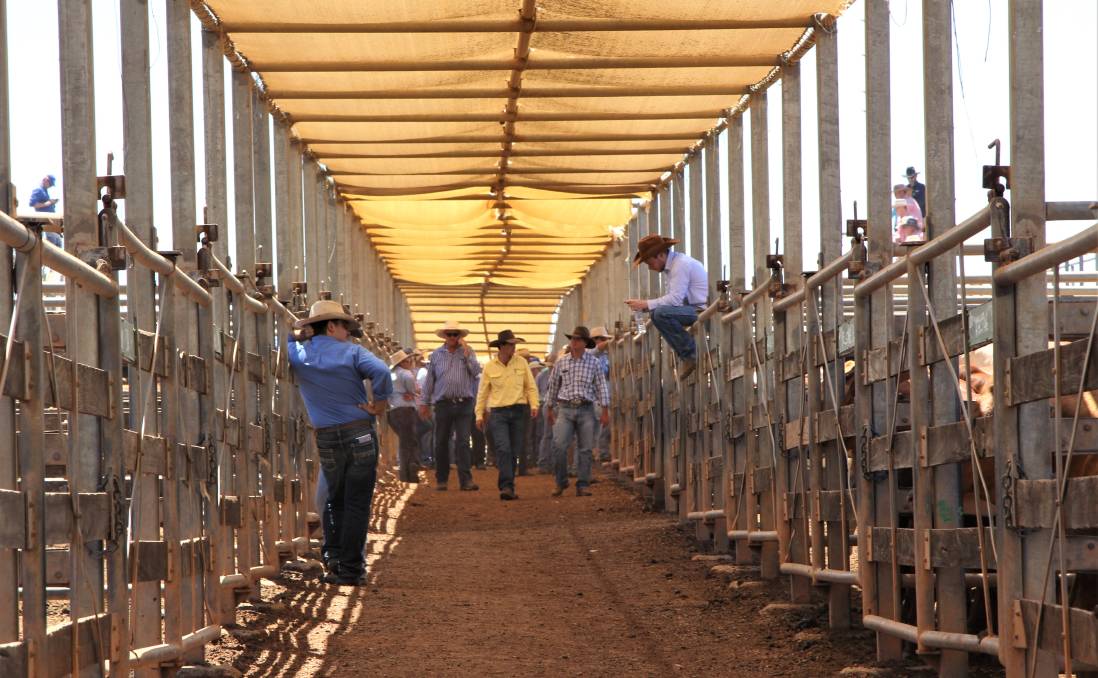
Cattle market recovery tipped to flow into 2021
The recovery in cattle prices in the run-up to Christmas is tipped to flow into the New Year, as tightening supply and ongoing strong grass-fuelled demand provides solid foundations for the market.
The Eastern Young Cattle Indicator has once again popped over the 800 cents a kilogram carcase weight, following a short-lived decline on the back of larger yardings in late November and early December.
How it opens on January 11 will depend enormously on what rain arrives in northern pastoral country in the next few weeks – or is on the radar in early 2021.
However, most agents and analysts are still predicting historically strong prices at January’s southern weaner sales, regardless of how La Nina performs.
They also agree it will be a long time before Australia’s cattle market experiences another year like 2020.
Meat and Livestock Australia analysts said increased supply and record prices in Queensland allowed the EYCI to experience large rises week-on-week through much of the year.
Western Australian prices also gained momentum on the back of increased interstate demand and strong trade, with the Western Young Cattle Indicator achieving a record of 833.75c/kg in November, overtaking the EYCI record of 829.50, MLA reported.
Cattle numbers sold via prominent online livestock marketer AuctionsPlus in 2020 increased by a whopping 108 percent on the year before, to sit at a record 674,748 head.
Chief market analyst Tim McRae reported NSW maintained its place as the largest listing state throughout the year at 261,608 head, a lift of 24pc year-on-year.
Queensland did close the gap significantly, however, falling just short of the top position at 250,866 head, an incredible jump of 248pc on 2019 figures.
Mr. McRae pointed to the combination of ongoing drought in key cattle-producing regions, COVID-19 movement restrictions, and record-high prices in the second half of the year contributing to that.
Victoria’s sales lifted 292pc to be 5000-odd head shy of the 100,000 mark and South Australian sales reached 34,306 head.
Southern Queensland was AuctionsPlus’ largest cattle purchasing region.
Watch this space
A key figure analysts will be watching in the early months of 2021 is the female slaughter ratio, which, as Thomas Elder Markets’ Matt Dalgleish explains, has remained stubbornly high through 2020.
In mid-December, it was averaging 53.7pc for the 2020 season, the second-highest annual average on record, he reported.
It is generally accepted that 47pc is the cut-off mark for liquidation – under that threshold means rebuilding is underway.
TEM analysis shows an FSR between 48 and 53pc results in an average annual decline in the cattle herd of 2.3pc per annum.
Through 2020, many theories were put forward as to why the FSR remained so high despite clear restocking intent, ranging from big dairy herd culls in Victoria to dry conditions in Queensland or prices too good to decline.
What is clear, however, is the female ratio would need to move lower in the coming months in order for a herd rebuild to occur, Mr Dalgleish said.
Weaner demand
No one is predicting any great easing of restocker demand in January.
At the heavy cattle prices 2020 is closing on, experts say there is still money to be made from trading.
Mecardo analyst Angus Brown says if grass is cheap and prices hold, people will buy light cattle at 550c during January’s southern sales.
“They will be willing to pay $1700 for a weaner on the expectation they’ll get $2000 back as feeders,” he said.
“Historically, $200 to $300 is considered a good margin.”
Speaking on Mecardo’s Commodity Conversations podcast, livestock specialist Andrew Hosken, a buyer of southern weaners, said big numbers of heavier calves – 400kg-plus – were expected this January, with Victoria and the Riverina having had a much-improved season.
That there will be buyers was unquestioned, he said.
Right across Australia, the numbers are just not there and there are plenty of empty paddocks between Victoria and Darwin.
He also made the point there had been some record crops in 2020, and therefore money in pockets.
“If those people decide to restock with cattle that augurs well for the southern breeders,” Mr Hosken said.
His key message to vendors was to wean.
“Those weaned will get added support,” he said.